Amanita muscaria var. muscaria
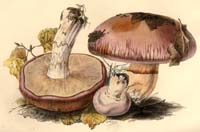 Key to Gilled Mushrooms Key
Key to Gilled Mushrooms KeyThis is a key to gilled mushrooms, that is, mushrooms having a definite cap with a fertile surface consisting of gills. The fruiting body usually also has a stem, although that may be lateral or absent (usually, then, the mushroom is growing from wood). You can use this key to identify mushrooms that you find.
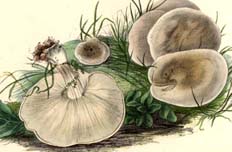 Agaricales Order
Agaricales OrderFruiting body containing fibers (usually in the stalk)
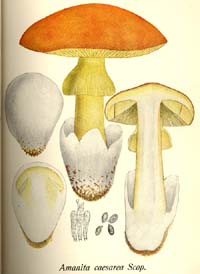 Amanita Genus
Amanita GenusFruiting body having a combination of some of the following characteristics:
Stalk growing out of a cup of cottony tissue called a volva (all white-spored mushrooms with a volva go here)
Cap with scattered patches or flakes of the same sort of tissue as the volva (see second picture), easily peeled off
Annulus (skirt-like ring on stalk)
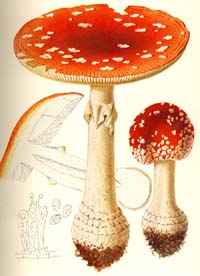 Amanita Section
Amanita SectionAll yellow-capped Amanitas can go here
All Amanitas with concentric, toothed rings around the base of stalk definitely go here
No volva; basal bulb sometimes small, often rimmed in one way or another
Universal veil generally leaves remains on cap as small scattered patches
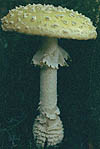 Amanita SubSection
Amanita SubSectionBase of stalk has concentric, toothed rings
Annulus usually present; usually (in my experience) jagged at the edges
Here are the characters that distinguish this species from the others in its group. For its more general characters, see higher up on the page.
If there's just a few words or a microscopic feature here, a more thorough description can be found above.
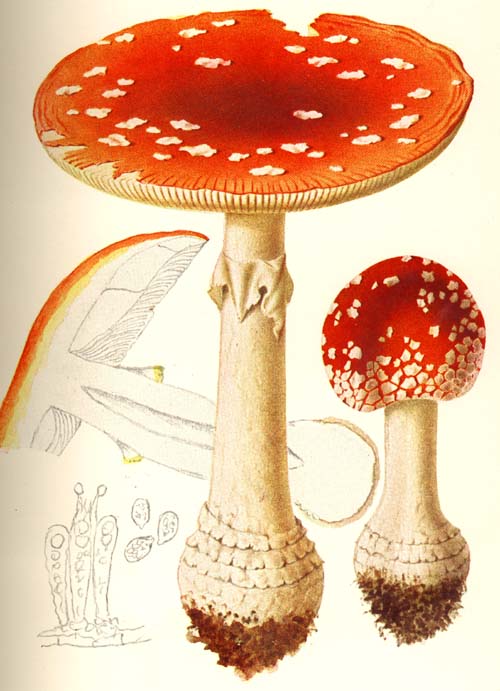
Diagnosis
Comments
This is the type species for the whole genus, so I put it in here so you'd know what it looks like. It hasn't yet been found East of the Rockies (and if you distinguish it strictly from v. flavivolvata, not even South of Alaska), but hey, if it can show up in East Africa on transplanted pine trees, it can do the same in the Mid-West
If the cap fades to dull brownish orange with exposure to sunlight, and the universal veil patches start out yellow and fade to white along with it, it is variety flavivolvata

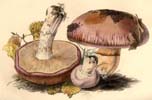


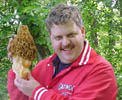

 Key to Gilled Mushrooms Key
Key to Gilled Mushrooms Key Agaricales Order
Agaricales Order Amanita Genus
Amanita Genus Amanita Section
Amanita Section Amanita SubSection
Amanita SubSection





